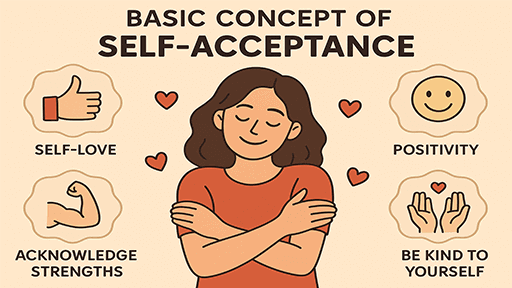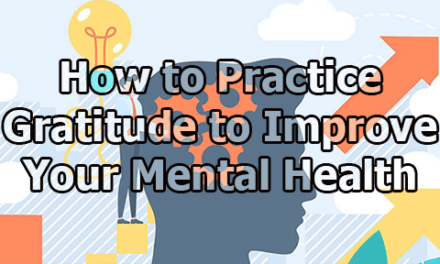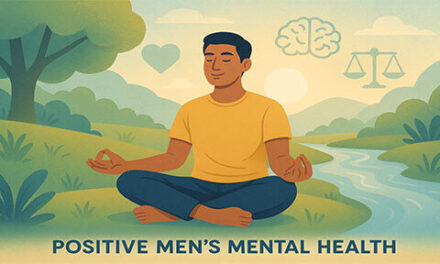Basic Concept of Self-Acceptance:
Self-acceptance is a fundamental yet often overlooked aspect of personal well-being. At first glance, it might seem like something we all naturally possess — after all, we live with ourselves every day. But when we take a closer look, the question becomes much more complex: Do we truly accept ourselves, fully and unconditionally? While many of us are comfortable embracing our strengths and achievements, we often struggle to acknowledge or make peace with our imperfections, mistakes, or perceived shortcomings. Yet true self-acceptance means embracing the whole of who we are — both the light and the shadow. In the following discussion, we’ll explore the basic concept of self-acceptance, what self-acceptance really means, why it matters, and how we can cultivate it in practical and meaningful ways.
What is the Meaning of Self-Acceptance?
At its core, self-acceptance means embracing who you truly are—completely and without conditions. It’s the willingness to recognize and honor every part of yourself, not just the polished, socially acceptable, or successful sides, but also the messy, flawed, and imperfect aspects. True self-acceptance involves recognizing your worth regardless of circumstances, achievements, or the opinions of others. As psychologist Leon Seltzer (2008) puts it, self-acceptance is “the state of complete acceptance of oneself”—a commitment to value your whole self without judgment or exception.
From a more academic standpoint, Morgado and colleagues (2014) define self-acceptance as “an individual’s acceptance of all of his/her attributes, positive or negative.” This definition is powerful because it removes the conditions we often attach to our self-worth. It’s not enough to only appreciate the traits we’re proud of or the behaviors that align with our goals—true self-acceptance requires us to welcome every part of ourselves, including those we might normally avoid, suppress, or criticize.
Understandably, this can be a tough concept to fully embrace. Accepting the parts of ourselves that we desperately wish were different—our mistakes, insecurities, or deep-rooted habits—doesn’t come naturally. However, in a somewhat paradoxical twist, meaningful self-growth begins only when we stop resisting who we are and start accepting ourselves as we are. We cannot improve what we deny. In other words, to change, we first have to acknowledge what needs changing—and that starts with radical self-acceptance.
Unconditional Self-Acceptance: Taking self-acceptance even further, we come to the idea of unconditional self-acceptance. This means maintaining a deep and unwavering acceptance of yourself regardless of your circumstances, achievements, or failures. It’s relatively easy to feel good about ourselves when we’re excelling—when we’re being praised, succeeding at work, or feeling loved. But unconditional self-acceptance challenges us to still embrace ourselves in the face of rejection, mistakes, or personal shortcomings.
Therapist and author Russell Grieger (2013) explains unconditional self-acceptance as recognizing that you are not your actions. That is, your mistakes and your flaws do not define your identity. According to Grieger:
“You accept that, as a fallible human being, you are less than perfect. You will often perform well, but you will also err at times… You always and unconditionally accept yourself without judgment” (Grieger, 2013).
This mindset shift is crucial. It helps separate your being from your behavior. You can recognize that you’ve done something wrong without declaring yourself as fundamentally flawed. When you adopt this unconditional lens, you allow space for compassion, healing, and meaningful personal growth.
Self-Acceptance vs. Self-Esteem: Although they sound similar and are closely connected, self-acceptance and self-esteem are not the same thing. Both involve how we view and relate to ourselves, but they approach the self from different angles.
Self-esteem relates more to how much you like, value, or approve of yourself. It often depends on external factors such as success, competence, or how others see you. In contrast, self-acceptance is about acknowledging and embracing who you are regardless of your circumstances or perceived worthiness. You don’t need to meet certain standards or expectations to accept yourself—you simply do, no matter what.
As Seltzer (2008) explains, “Whereas self-esteem refers specifically to how valuable, or worthwhile, we see ourselves, self-acceptance alludes to a far more global affirmation of self. When we’re self-accepting, we’re able to embrace all facets of ourselves—not just the positive, more ‘esteem-able’ parts.”
Ultimately, self-acceptance creates the foundation upon which healthy self-esteem can grow. When you accept yourself as you are—warts and all—you build a solid inner core that doesn’t easily crumble under the weight of failure, criticism, or comparison. While self-esteem may fluctuate with your daily experiences, self-acceptance is a steadier, more compassionate relationship with yourself—one that says, “I am worthy just as I am.”
Self-Acceptance Theory in Psychology:
The concept of self-acceptance may seem like a natural fit within the field of psychology, yet, interestingly, there is no single, unifying theory that fully captures or explains it. Despite its ancient roots—stretching back through centuries of philosophical and spiritual traditions—self-acceptance remains somewhat fragmented and under-theorized in modern psychological science.
Although numerous researchers have examined self-acceptance in relation to other psychological constructs such as well-being, self-esteem, resilience, and mental health, the field has yet to formally adopt it as a central or standalone concept. In other words, while self-acceptance is often acknowledged as an important factor in psychological health, no major branch of psychology has fully embraced it as a core subject of study. It has been explored, referenced, and integrated into therapeutic approaches, but rarely developed into a comprehensive theory of its own.
As a result of this oversight, the research landscape surrounding self-acceptance is scattered. We have valuable but isolated findings—some from clinical psychology, others from positive psychology, and still others from humanistic and existential schools of thought. We know, for instance, that higher levels of self-acceptance are associated with greater life satisfaction, lower anxiety, and improved emotional regulation. However, the field still lacks a cohesive framework to explain how self-acceptance develops, why it varies from person to person, or what mechanisms drive it across the lifespan.
What’s more, while many therapists and counselors encourage clients to practice self-acceptance as part of healing and growth, the concept has also become popular in more informal spaces—namely, in self-help literature, online communities, mindfulness movements, and pop psychology. These sources often promote self-acceptance as a key to inner peace and emotional freedom, but they sometimes do so without the empirical rigor or nuanced understanding that academic psychology typically demands.
Ultimately, this leaves us in a curious place: self-acceptance is widely praised and frequently recommended, yet it remains loosely defined and theoretically neglected. We acknowledge its value, but we still know surprisingly little about how it forms, evolves, or integrates into the larger tapestry of personality and identity development.
As interest in holistic well-being and positive mental health continues to grow, there is a compelling need for psychology to invest more deeply in understanding self-acceptance—not just as a therapeutic tool, but as a fundamental human capacity with developmental, emotional, and existential significance.
Using Self-Acceptance in Therapy:
In recent years, self-acceptance has emerged as an increasingly important theme within therapeutic practice. Though it may not yet be fully developed as a standalone theory in psychology, its role in mental health and emotional well-being is becoming more evident. Research suggests that individuals with low levels of self-acceptance often experience decreased well-being and are at greater risk for developing mental health issues such as anxiety, depression, and chronic self-criticism (Vasile, 2013). This insight has prompted therapists and counselors to incorporate self-acceptance as a foundational part of the healing process.
If the absence of self-acceptance contributes to psychological distress, it follows that cultivating greater self-acceptance can have the opposite effect. In other words, self-acceptance may serve as a buffer or protective factor—helping individuals cope more effectively with emotional pain, overcome internal conflict, and build a healthier relationship with themselves. This is one of the main reasons therapists encourage clients to work on accepting both who they are and the reality of their lived experiences.
If you’ve ever engaged in therapy, even without explicitly using the term “self-acceptance,” chances are that the process involved confronting aspects of yourself that you may have struggled with—your insecurities, your perceived flaws, or your past mistakes. Therapists often guide clients toward the understanding that healing doesn’t require perfection, but rather an honest and compassionate acknowledgment of the whole self. This includes both strengths and shortcomings, admirable qualities and undesirable tendencies.
However, it’s essential to understand a subtle but important nuance here: accepting yourself does not mean approving of everything you’ve ever done. Some clients initially resist the idea of self-acceptance because they fear it implies condoning their worst moments—whether those are impulsive actions, harmful behaviors, or lingering guilt over past mistakes. But therapeutic self-acceptance doesn’t require you to celebrate or excuse these parts of yourself. Instead, it asks you to face them honestly and compassionately, recognizing them as part of your human experience.
Accepting that you have made mistakes—or possess traits you wish to change—doesn’t mean you are letting yourself off the hook. Rather, it is the first step toward genuine transformation. When you deny or reject these aspects of yourself, you push them deeper into the shadows of your mind, where they often cause more damage. But when you acknowledge them with clarity and compassion, you open the door for growth, change, and healing.
A skilled therapist can help guide this process, offering you tools to build self-acceptance in a balanced and healthy way. They may help you separate who you are from what you do—a powerful distinction that allows space for self-forgiveness, behavior change, and inner peace.
For those who are specifically interested in structured work around self-acceptance, one potential avenue is self-acceptance training. This is a unique and alternative approach to therapy described by Zatzick and Johnson (1997). Rather than relying on traditional one-on-one counseling, this method uses group workshop settings to promote emotional healing. In these sessions, facilitators guide participants into what they describe as a “hypnotic trance”—a deeply relaxed mental state aimed at reducing internal resistance. In this state, participants are encouraged to temporarily set aside their self-criticism and negative internal dialogue in order to access greater self-awareness and self-compassion.
According to Zatzick and Johnson (1997), this process allows individuals to more easily embrace all aspects of themselves, including those they typically reject or suppress. While this method may not be backed by the same level of empirical evidence as more mainstream therapies, it presents an interesting and potentially valuable option for people seeking a different path to self-acceptance.
It’s important to note, however, that this kind of workshop isn’t for everyone, and its effectiveness may vary from person to person. As with any form of therapy or personal development work, what matters most is finding an approach that resonates with you and supports your unique needs. If traditional therapy hasn’t helped you connect with your deeper self, exploring alternatives like self-acceptance training might be worth considering—provided it’s done with care, self-awareness, and realistic expectations.
Ultimately, self-acceptance is not about perfection. It’s about honesty, courage, and the willingness to make peace with yourself as you are—while continuing to grow into who you want to be.
Examples of Self-Acceptance in Practice:
Now that we’ve explored what self-acceptance means and why it’s essential for emotional well-being, a natural next step is to ask: What does self-acceptance actually look like in real life? How can we recognize it within ourselves or others? Is there a clear moment when we can say, “Yes, I truly accept myself”?
Marquita Herald (2015), writing for Emotionally Resilient Living, offers a profound reflection that helps us begin answering that question:
“Can you look in the mirror and truly accept the unique, wonderful work-in-progress person staring back at you?”
This simple yet powerful question invites us to pause and examine our inner relationship with ourselves. True self-acceptance is not about perfection or achieving a final, flawless version of who we are. Instead, it’s about being able to face ourselves—with honesty, compassion, and without denial or self-deception. It means standing in front of a mirror and seeing all of who we are: the admirable traits, the parts we struggle with, the mistakes we’ve made, and the wounds we carry—and still affirming our worth.
When you no longer feel the need to cover up your flaws, explain them away, or punish yourself for not meeting someone else’s expectations, that’s when you begin to touch the essence of self-acceptance. It’s a quiet inner strength, a compassionate embrace of the entire self, even those parts you once found difficult to acknowledge.
But self-acceptance is deeply personal and can look very different depending on a person’s unique life experiences, struggles, and inner challenges. Here are some illustrative examples that show how self-acceptance might manifest in real, everyday life:
- The Divorced Man Who No Longer Sees Himself as a Failure: Imagine a man navigating the painful aftermath of a divorce. He may carry a heavy burden of guilt, disappointment, or self-blame—believing that his failed marriage makes him a failure. However, as he moves through the process of self-reflection and healing, he may come to a new understanding: that while he made mistakes and the marriage did not survive, these facts do not define his entire identity. With self-acceptance, he begins to separate his worth from the outcome of the relationship. He sees himself not as a failure, but as a human being who is growing, learning, and still worthy of love and respect.
- The Woman Battling Anorexia Accepting Her Body and Mindset: For someone struggling with anorexia, self-acceptance can be incredibly difficult—especially when body image distortions and perfectionism are deeply ingrained. But self-acceptance in this context might look like a courageous admission: “My body is imperfect, and I have a tendency to view it in unhealthy ways. I don’t have to like it right now, but I’m committed to understanding and working through these thoughts.” This doesn’t mean she stops caring for her health; rather, she starts the journey of viewing herself with compassion rather than criticism, and sees her recovery not as a pursuit of perfection, but as an act of self-love.
- The College Student Accepting His Academic Struggles: Consider a hardworking college student who consistently receives C’s and the occasional B despite hours of effort. He might initially feel discouraged, comparing himself to peers or believing he isn’t smart enough. But self-acceptance allows him to reframe this narrative. He may come to recognize that standardized academic performance doesn’t fully capture his abilities or intelligence. Perhaps he’s creative, emotionally intelligent, or has strong interpersonal skills—traits not easily measured by exams. Accepting this reality, he lets go of harsh self-judgment and embraces a broader, more compassionate view of success.
- The Young Woman Facing Her Self-Doubt: A young woman plagued by low self-esteem might go through life avoiding introspection, denying her self-doubt, or pretending that everything is fine. But the moment she begins to honestly acknowledge the negative beliefs she holds about herself—“I’m not good enough,” “No one truly cares about me,”—is the beginning of real self-acceptance. She starts to examine these beliefs critically, questioning their truth, and recognizing them as cognitive distortions rather than facts. Through this process, she builds emotional resilience and takes ownership of her inner dialogue, learning to treat herself with greater kindness.
- The Overwhelmed Employee Accepting Her Limits: Picture an employee working under a high-pressure boss who sets nearly impossible goals. She frequently feels like she’s falling short, and this sense of inadequacy eats away at her self-worth. But self-acceptance allows her to acknowledge: “Yes, sometimes I don’t meet every expectation. But that doesn’t mean I’m not capable or valuable.” She begins to understand that her performance is not the sum total of her identity. Failure becomes a part of her growth—not a permanent label—and she reclaims her sense of self-worth, even in an environment that doesn’t always affirm it.
These examples highlight a powerful truth: self-acceptance is not a one-time event or a static achievement. It’s a mindset, a daily practice of embracing ourselves with openness and compassion—no matter our circumstances. It involves making peace with the things we cannot change, taking responsibility for the things we can, and recognizing that every part of us has shaped who we are today.
Self-acceptance doesn’t mean we stop striving to grow. In fact, it is often the first and most crucial step toward real and lasting personal development.
Using Self-Acceptance in Addiction Recovery:
If you’ve ever participated in a recovery group, therapy session, or a treatment program focused on overcoming addiction—whether related to alcohol, drugs, gambling, sex, or other compulsive behaviors—then the concept of self-acceptance has likely crossed your path. It’s not just a supportive ideal but a core principle embedded within many recovery models. Acceptance—of oneself and of reality as it currently is—is a foundational step on the path to healing.
Self-acceptance plays a crucial role in addiction recovery because addiction often thrives in the shadows of denial. Those grappling with addiction frequently turn to denial as a psychological shield—consciously or unconsciously avoiding the truth of their situation. As Lancer (2016) explains, individuals suffering from substance use disorders may engage in a variety of self-protective behaviors: minimizing the severity of their actions, rationalizing their choices, forgetting painful moments, or even deceiving themselves. These mechanisms may offer temporary emotional relief, but they also obstruct genuine recovery by allowing the person to remain disconnected from the reality of their condition.
Even when someone begins to recognize their struggle with addiction, they may still cling to the illusion of total control. They may believe that simply wanting to change should be enough to reverse the damage or stop the pattern. Unfortunately, this belief can become a dangerous trap—because, in truth, no one has full control over every part of their life. Recovery is not about mastering everything; it’s about surrendering to the fact that some things are beyond our grasp and working intentionally on those we can influence (Lancer, 2016).
That’s where self-acceptance becomes transformative. To move forward, the person in recovery must begin by acknowledging several difficult but necessary truths (Lancer, 2016):
- That they have a problem that needs to be addressed.
- That they do not have full control over everything in their life.
- That they, like all humans, have limitations, flaws, and vulnerabilities.
- That their current circumstances—no matter how painful—are real and valid.
Once these realities are faced with honesty and compassion, the journey of healing can truly begin. Self-acceptance doesn’t mean resignation or complacency. It doesn’t mean saying, “This is just the way I am, and I’ll never change.” On the contrary, it’s the starting point for meaningful transformation. It allows the person to stop running from their pain, and instead, turn toward themselves with gentleness and a commitment to change.
As Rosenthal (2015) wisely puts it, the goal is not to foster self-blame or guilt. The aim is to shift from the mindset of “I don’t like who I am” to “I’m going to be on my own side while I create change.” That is the power of self-acceptance. It provides a stable, grounded place from which a person can grow—not by tearing themselves down, but by choosing to support themselves as they rebuild their life.
Addiction recovery expert Michele Rosenthal underscores this beautifully:
“In recovery, when you accept who and where you are in the recovery process, you appreciate the truth of what that means today while at the same time admitting that change needs to occur” (Rosenthal, 2015).
This dual awareness—the honesty of the present moment and the hope for future growth—is at the heart of recovery through self-acceptance.
Narcotics Anonymous (NA) and the Role of Self-Acceptance: While many people are familiar with Alcoholics Anonymous (AA), its counterpart Narcotics Anonymous (NA) has its own unique approach to recovery—one in which self-acceptance is not just encouraged, but seen as essential to breaking the cycle of addiction.
NA’s philosophy acknowledges a fundamental truth: that many people who turn to narcotics do so in an effort to escape from themselves. Drugs can become a way to temporarily silence the inner critic, to suppress shame, and to avoid the painful realities of one’s life. In this sense, addiction becomes not just a physical dependency, but a defense mechanism against self-rejection.
NA recognizes that healing begins when this cycle of denial is interrupted by self-acceptance. The program encourages its members to confront their reality with openness and humility. As stated in the Narcotics Anonymous Basic Text:
“Self-acceptance permits balance in our recovery. We no longer have to look for the approval of others because we are satisfied with being ourselves. We are free to gratefully emphasize our assets, to humbly move away from our defects, and to become the best recovering addicts we can be. Accepting ourselves as we are means that we are all right, that we are not perfect, but we can improve” (Narcotics Anonymous World Services, Inc., 1985).
This passage reflects a deeply compassionate and empowering view of recovery. It speaks to the freedom that comes from letting go of shame, the strength that emerges when we stop seeking validation from others, and the dignity that lies in striving to improve without condemning who we are today.
Self-acceptance in NA isn’t about making excuses or denying responsibility. It’s about finding the courage to say: “I am not perfect, but I am still worthy of recovery. I can learn, grow, and heal—not in spite of my flaws, but through them.” This attitude fosters a sense of peace and balance, giving recovering individuals a steady foundation from which they can begin rebuilding their lives.
Consequently, self-acceptance is not just a therapeutic buzzword—it is a cornerstone of lasting recovery. Whether in formal treatment programs or peer-led support groups like NA, learning to accept oneself with honesty and compassion is one of the most powerful tools a person can develop. By acknowledging both their pain and their potential, recovering individuals take back their agency—not through control, but through acceptance of reality, responsibility, and the possibility of renewal.
Worksheets That Help Build Self-Acceptance:
Self-acceptance is not something that happens overnight. It is a journey, often requiring structured guidance, reflection, and compassionate tools. Fortunately, there are a number of powerful worksheets and exercises designed to help individuals cultivate this vital quality. These tools can be especially useful for those dealing with low self-esteem, past trauma, or addiction recovery. Let’s explore these resources, beginning with one of the simplest but most impactful tools: positive self-talk.
1. Building Self-Acceptance Through Positive Self-Talk (Handout): Although this resource is more of a handout than a traditional worksheet, its value should not be underestimated. It serves as both a teaching tool and a reflective guide to understanding and nurturing self-acceptance. The handout begins by defining what self-acceptance is and explaining how it differs from self-esteem.
While self-esteem often hinges on external validation and performance, self-acceptance goes deeper—it’s about embracing who you are, flaws and all, and affirming your inherent worth without conditions. To build this sense of worth from within, the handout introduces positive self-talk as a fundamental practice.
Some examples of positive affirmations it suggests include:
- “I am a good and caring person and deserve to be treated with respect.”
- “I am capable of achieving success in my life.”
- “There are people who love me and will be there for me when I need them.”
- “I deserve to be happy.”
- “I am allowed to make mistakes and learn from them.”
These aren’t just words. When repeated with sincerity and belief, they become internalized messages that can counteract years of negative conditioning. As individuals read, repeat, and reflect on these affirmations, they begin to rebuild a healthier relationship with themselves—one grounded in kindness, empathy, and truth.
2. The Radical Self-Forgiveness/Acceptance Worksheet: Created by Colin Tipping of RadicalForgiveness.com, this comprehensive worksheet is designed to help users delve deeply into their emotional experiences and begin the healing process through radical self-forgiveness and acceptance.
Spanning 22 detailed sections, it is both a spiritual and psychological tool. It uses language that refers to a Higher Power, Divine Order, and spiritual awakening, which aligns well with 12-step programs and other recovery journeys. However, it can also be adapted by substituting terms such as “Nature,” “Love,” “Reality,” or “Inner Wisdom” for those who are not religious.
Here’s a detailed look at the structure:
Section 1: Identifying what you blame yourself for and the inner criticisms you keep repeating:
“What I am blaming myself for and what I hear my judging self saying to me about it is…”
This sets the emotional tone and begins to externalize inner shame.
Sections 2–4: Focus on self-reflection. How do you feel about yourself in this context? How would you rate your self-esteem, guilt, and shame? Here, you are asked to acknowledge your feelings and commit to withholding judgment of yourself.
Section 5: Explores the appropriateness of guilt—is it rooted in true wrongdoing, or is it exaggerated and self-imposed? This helps distinguish between healthy regret and toxic self-criticism.
Section 6: This part is pivotal:
“As I really examine how I feel about myself, I realize that underlying my feelings of shame, there is a belief or a set of beliefs that I hold about myself that are not true…”
You identify old messages from authority figures or parents that are not based in truth, such as “I’m not good enough” or “I always mess things up.”
Sections 7–15: Each section presents a belief or statement related to your healing. You then rate your openness to it using the scale: Willing, Open, Skeptical, or Unwilling. This process brings self-awareness to how ready you are to change and forgive.
Sections 16–18: You begin to release those judgments and forgive the people who contributed to your false beliefs. You name them and write forgiveness statements, often leading to deep emotional release.
Section 19: Here you’ll find a personalized self-forgiveness declaration:
“[Your name], I completely forgive you for…”
This act of self-compassion shifts inner dialogue from harshness to understanding.
Section 20–21: You affirm your commitment to healing through surrendering to your Higher Power, writing a note of healing to others, and letting go of old wounds.
Section 22: Finally, you re-rate your self-esteem and compare it to your earlier score. Often, even one session leads to noticeable improvement in how you feel about yourself.
3. Improving Self-Esteem (Accepting Yourself Workbook): This resource offers a series of self-compassion exercises that gradually build toward full self-acceptance. Unlike one-off worksheets, this is more of a guided journey that allows users to actively build their self-awareness and positive self-image over time.
Key activities include:
- Focusing on the Positive You: You’re asked to name two or three positive qualities about yourself. It could be kindness, creativity, resilience—anything that feels true.
- Positive Qualities Record: You make a longer list of your positive traits, using both past and present experiences to illustrate them. This deepens your emotional connection to those traits.
- Positive You Journal: This is a journaling practice where you reflect on how your positive qualities have shown up in your daily life. Writing these down helps reinforce a pattern of recognizing your worth.
- Acting Like the Positive You: You commit to using your qualities more intentionally, like planning to show kindness, speak up with courage, or pursue a goal with determination.
- Fun & Achievement Activities: This is about celebrating yourself. You schedule joyful or fulfilling activities and make note of the achievements you often overlook.
These exercises are powerful because they shift the focus from what’s “wrong” to what’s already working within you.
4. What I Believe Worksheet: Developed by Susyn Reeve and Joan Breiner (Self-Esteem Experts), this worksheet digs into the core beliefs you’ve held since childhood. Understanding where these beliefs come from is essential to learning how to either reinforce or challenge them.
The worksheet asks:
- What beliefs did you learn about yourself from key people in your life—parents, siblings, friends, teachers?
- Which of those messages still influence your self-perception today?
- Which ones support your growth, and which ones hold you back?
- Are these beliefs actually truths, or are they just thoughts repeated over time?
- What new, empowering beliefs would you like to adopt?
- How can you start to internalize those healthier thoughts?
This reflective process helps you gain clarity on how your self-concept was shaped and allows you to take control of rewriting that narrative in a healthier way.
5. Love & Admire Me Worksheet: This two-part exercise from the same experts is built on a beautiful principle: if you want to strengthen your self-esteem, train yourself to see the good in yourself every single day.
Part 1: You write down your admirable traits—kindness, intelligence, creativity, loyalty—and provide specific moments when you lived them. This makes your self-worth feel real and grounded.
Part 2: Every evening for a week, you record how you expressed those qualities during the day. For instance:
- “I showed patience with my colleague today.”
- “I offered help to someone without being asked.”
- “I stood up for myself in a respectful way.”
This habit gradually helps retrain your brain to focus on your strengths rather than your flaws. Over time, this becomes second nature.
6. How to Love Yourself Worksheet: Also from the Self-Esteem Experts, this worksheet shifts your focus to what you genuinely appreciate about yourself. It’s not just about listing hobbies or talents, but naming the inner traits that reflect your essence.
To help guide the process, the worksheet provides reflection prompts like:
- What do I appreciate about who I am?
- What do my friends love about me?
- What are my greatest strengths?
- What do I admire in others that I also possess?
Once you have completed your list, the next step is to stand in front of a mirror and speak these affirmations aloud:
- “[Your Name], I love your courage and warmth.”
- “I love my sense of humor and the way I light up a room.”
- “I love my ability to keep going even when things are hard.”
This is often a deeply emotional process. Many people cry the first time they do it. But this act of verbally honoring yourself is a profound step toward self-acceptance.
Each of these worksheets—whether it’s a one-page handout or a 22-step journey—has the power to nudge you closer to a more compassionate, realistic, and empowering view of yourself. Self-acceptance isn’t just about feeling good; it’s about healing, releasing shame, and beginning to live as your full, authentic self.
The work can be challenging at times, but the reward is invaluable: a life where you can look in the mirror and say, “I am enough. Just as I am.” Let these resources be your guide on that journey.
Exercises to Increase Self‑Acceptance:
If you’re someone who learns best from action rather than words, there are practical, hands‑on activities you can use to nurture self‑acceptance. These exercises engage your thoughts, behaviors, and feelings in ways that help reshape your self‑relationship over time.
1. SMART Recovery Self‑Acceptance Circle Exercise: Shared on the SMART Recovery website, this exercise is designed to counter irrational thinking and support balanced self-awareness:
Create a large circle divided horizontally into two halves:
- Top Half: List things you do well (with + signs) and things you do poorly (with − signs)—whether at work, school, or life generally.
- Bottom Half: Reflect deeper by listing traits or qualities you like about yourself, as well as those you don’t like or wish to change.
Next, explore these prompts to ground your experience:
- Does one bad experience (like a failure or rejection) negate all your positive qualities?
- Does it really follow that one failure means you are completely hopeless?
To shift your mindset, affirm with statements like:
- “I’m not a bad person when I act badly; I’m a person who has acted badly.”
- “I can accept myself whether I win, lose, or draw.”
- “I can reprimand my behavior without condemning my worth.”
- “Correction, yes—but condemnation, no.”
- “I can hold myself accountable for mistakes without berating myself for them.”
- “Success doesn’t make me better; failure doesn’t make me worse.”
- And many more powerful truths that affirm your shared humanity and inherent worth.
These reflections help you externalize behavior from identity—freeing you from the tendency to define your self‑worth solely by performance or external judgment.
2. Twelve Practical Self‑Acceptance Suggestions: These are everyday practices inspired by psychologists and therapists—designed for long-lasting change (Tartakovsky, 2016):
- Set an intention to shift from blame and shame to allowance, trust, and acceptance.
- Celebrate your strengths, no matter how small.
- Notice toxic influences—who reinforces your self‑criticism? Why do you let it affect you?
- Create a supportive circle, distancing from negative voices and surrounding yourself with people who believe in you.
- Forgive yourself, release regrets, and leave the past behind.
- Use a mantra: “I’m only human, doing the best I can.”
- Mourn lost dreams, but come back to being the best version of yourself.
- Do acts of kindness—helping others nurtures self‑
- Accept what you can’t control and focus on what you can improve.
- Visualize your highest self, and speak to that version of you with kindness.
- Practice daily self‑compassion and forgiveness.
- Fake it ’til you make it—act as if you are worthy, and you’ll begin to believe it.
These suggestions can be woven into daily life, creating a fertile ground for self-compassion to grow.
3. Zen Habits Techniques by Leo Babauta: Leo Babauta offers gentle, mindful strategies to increase acceptance from the inside out:
- Relaxed Awareness: Sit quietly, soften your attention, and simply observe your thoughts and emotions without judgment. Let them drift by, like clouds, noticing them without trying to change anything.
- Welcome What You Notice: Instead of shaming or suppressing negative feelings, invite them in and treat them gently. You might even say, “It’s okay you’re here—I see you.” This transforms resistance into compassion.
- Let Go of Rating Yourself: Notice how often you judge yourself (good/bad, better/worse). Simply observe the habit, and gradually loosen its grip.
- Gratitude Sessions: In the morning or evening, reflect on things you’re grateful for—especially any insights or growth born from failure or imperfection.
- Compassion & Forgiveness: When you notice self-judgment, ask, “How would I treat a friend in this situation?” Then treat yourself the same way.
- Learn from All Parts: Even setbacks are lessons. Recognize that every experience—even painful ones—can teach you something valuable.
- Separate from Your Emotions: View emotions as passing clouds—not your identity. You feel them but are not defined by them.
- Talk to Someone: Sharing what’s on your mind with a trusted friend or supporter helps externalize and clarify your inner experience.
These techniques encourage curiosity, mindful self-observation, and emotional self-resilience—not suppression or denial.
4. Unconditional Self-Acceptance Practice by Russell Grieger (2013): Grieger offers structured, introspective exercises focused specifically on cultivating unconditional self-acceptance:
- Grade Yourself on how well you live by the principle of unconditional acceptance. What grade would you like to earn?
- Identify two situations in which you judge yourself harshly. What supportive internal messages could counter that judgment?
- Commit to six daily reminders spaced throughout your day (e.g., at meals and bedtime) to separate who you are from what you do or feel. Quietly affirm: “I am neither all good nor all bad—I am simply me.”
- Practice unconditional acceptance toward others—judge only behaviors, not people as a whole. This softens your tendency to judge yourself similarly.
- Teach someone else about unconditional self-acceptance. Explaining it to another helps deepen your own understanding and conviction.
These deliberate, repeatable practices strengthen your inner capacity to see yourself as worthy—regardless of mistakes, flaws, or external approval.
Why These Exercises Matter: Taken together, these exercises gently dismantle the harmful habit of equating self-worth with performance or external validation. They build a foundation of compassion, internal kindness, and stability. Consistent application of these techniques helps you gradually rewire inner beliefs—from self-criticism to self-acceptance. Over time, they enable you to live more authentically, courageously, and compassionately—toward yourself.
Self‑Acceptance Activities for Adults and Groups:
Working on self-acceptance in a group setting can be powerful—whether you’re with friends, co-workers, therapy groups, or community members. These activities foster connection, insight, and genuine appreciation of oneself and each other.
1. Developing Self-Acceptance / Examining Self-Measurement: Adapted from the Australian Department of Education and Training, this activity blends lesson and exercise, making it ideal for adult groups or classroom settings.
Setting the Stage: Begin by guiding participants to rise and stretch:
- Stand with feet shoulder-width apart.
- Reach arms to the ceiling, breathe deeply, then gradually lower into a forward bend.
- Repeat 3–4 times, encouraging full breaths and mindful release of tension.
Explain that stretching not only energizes the body but also releases endorphins—our brain’s natural “feel-good” chemicals—which support positive emotional states and greater openness.
Part A: Negative vs. Positive Self-Talk:
- Give each person a piece of paper they will tear into two halves labeled “NEGATIVE” and “POSITIVE.”
- Invite reflection on self-talk:
- On the NEGATIVE side, write self-critical beliefs (e.g. “I’m hopeless at math,” “I never make friends easily”).
- On the POSITIVE side, write affirmations or strengths you believe you possess (e.g. “I’m kind,” “I’m a loyal friend”).
- Have each participant share at least one positive statement aloud. If someone struggles, allow another group member to suggest something encouraging.
- Prompt the group to explore underlying assumptions:
- Do the negative statements feel more abstract or less provable than the positive ones?
- Does seeing them on paper change how real they feel?
- Conclude by having participants crumple up the NEGATIVE sheet and throw it away, while placing the POSITIVE sheet somewhere visible (a diary cover, workspace, etc.) to serve as a lasting reinforcement.
Part B: Changeable vs. Unchangeable Traits:
- Read out a list of personal attributes and ask participants to raise their hand if they believe each can be changed:
- Height, skin color, eye color, birth year (unchangeable) vs. weight, emotional expression, anxiety response, family size (changeable).
- Present a school-life scenario (e.g. a student upset about not being good at sports). Have small groups suggest alternative beliefs that are more realistic and self-accepting (e.g. “I can accept myself without having to be the best in PE”).
- Encourage participants to challenge absolutes like “must,” “everyone,” or “awful,” and instead cultivate flexible, provable beliefs:
- “I can accept myself without needing to measure up to everyone else.”
Wrap-up Prompt: Invite participants to practice self-acceptance throughout the week—especially resisting comparisons and focusing on their own journey.
2. Positive Focus Group Activity: Facilitated by Zdravko Lukovski (2015) from Enlightenment Portal, this group exercise is designed to foster self-worth through community support.
- Form a circle with your group—whether friends, colleagues, or family.
- Take turns being in the “spotlight.” The rest of the group shares what they like, admire, or appreciate about that person.
- Continue until everyone has received affirmations. Keep each turn timed to maintain flow.
- Afterward, debrief briefly with prompts like:
- “How did it feel to receive these comments?”
- “What surprised you?”
- “Did you notice any shifts in your self-view?”
This exercise can be deeply moving and affirming—especially when trust and safety are established.
3. Meditation for Self-Acceptance: If movement or discussion feels too intense, meditation offers a gentle, inward path toward acceptance. Research shows practices like mindfulness and loving‑kindness meditation can help rewire emotional processing and increase self-compassion (Pillay, 2016).
Guided Practice by Rezzan Hussey (2017):
- Begin by focusing on your breath; take several slow, deep breaths.
- Simply observe your breath flowing in and out.
- Notice thoughts, feelings, and bodily sensations without judgment.
- When your mind wanders, gently note “thinking… thinking…” and redirect attention to breathing.
- Continue for 5–20 minutes, tailoring the length to your comfort.
If you’d like more structure, try:
- “Guided Meditation for Self-Acceptance” at mindfulnessexercises.com
- “Guided Meditation for Unconditional Self-Acceptance” by Alicia Cramer
These practices encourage inner peace, reduced reactivity to self-criticism, and greater capacity to embrace your full experience.
Why These Activities Work:
- Movement, sensory engagement, and sharing break through internal resistance.
- Group exercises create collective compassion and validation.
- Meditation builds inner safety and a non‑judgmental stance toward your own mind.
- All approaches help you separate self-worth from performance, break negative internal loops, and cultivate kindness toward yourself.
Measuring Self-Acceptance (Scales, Tests, and Questionnaires):
Self-acceptance is one of those internal, deeply personal experiences that can feel difficult to define—let alone measure. After all, how do you quantify something as complex and intangible as how a person views and accepts themselves? It’s not as straightforward as measuring height, blood pressure, or even more visible psychological behaviors. And yet, researchers and psychologists have developed a number of tools that attempt to do just that.
While measuring self-acceptance is certainly a challenge, especially since it often involves subconscious beliefs and unspoken self-judgments, several well-designed scales and questionnaires have proven effective. These tools are frequently used in clinical psychology, mental health counseling, academic research, and even personal development settings. Let’s take a closer look at four of the most established and widely used instruments for measuring self-acceptance.
1. Generalized Expectancy for Success Scale (GESS): Developed by Fibel and Hale in 1978, the Generalized Expectancy for Success Scale (GESS) is one of the more commonly referenced tools for assessing self-acceptance—though it focuses on a specific facet of the construct: an individual’s expectations about their own future success or failure.
The scale consists of 30 items, and participants are asked to rate how likely each statement feels to them on a 5-point Likert scale ranging from 1 (highly improbable) to 5 (highly probable). Each item begins with the phrase “In the future I will…” and ends with a personal prediction—either optimistic or pessimistic—about one’s success, effectiveness, or societal contributions.
Sample Items:
- “In the future, I will find that people don’t seem to understand what I am trying to say.”
- “In the future, I will deal poorly with emergency situations.”
- “In the future, I will carry through my responsibilities successfully.”
- “In the future, I will not make any significant contributions to society.”
- “In the future, I will succeed at most things I try.”
This tool doesn’t just assess surface-level confidence—it reflects deep-seated beliefs about self-efficacy and perceived value. It has been found to correlate significantly with other key psychological measures, including depression and hopelessness.
In fact, later validation of the GESS demonstrated that it shares a strong relationship with Rosenberg’s Self-Esteem Scale, offering further support for its validity and reliability as a measure of self-acceptance (Mearns, 1989).
2. Expressed Acceptance of Self and Others Scale: One of the earlier and more comprehensive tools in this field was created in 1952 by researcher Emanuel M. Berger, titled the Expressed Acceptance of Self and Others scale.
This scale is a bit more expansive in its scope than the GESS. It consists of 64 items, which are split into two distinct categories:
- 36 items measure self-acceptance
- 28 items measure acceptance of others
Each statement is rated on a 5-point scale, where 1 means “not at all true of myself” and 5 means “true of myself.” The goal is to identify how someone views themselves and how generously they extend acceptance to other people.
The higher the score on the self-acceptance portion, the greater the individual’s capacity for recognizing and accepting their own flaws, strengths, and humanity.
This scale was particularly ahead of its time in recognizing the link between how we treat ourselves and how we treat others—emphasizing that acceptance of the self often mirrors acceptance of others.
3. Unconditional Self-Acceptance Questionnaire (USAQ): Fast-forwarding to the 21st century, the Unconditional Self-Acceptance Questionnaire (USAQ) represents a more modern and nuanced take on self-assessment. Developed by Chamberlain and Haaga in 2001, this scale seeks to measure self-acceptance that does not depend on success, appearance, performance, or others’ approval.
The USAQ includes 20 statements, each rated on a 7-point Likert scale ranging from 1 (almost always untrue) to 7 (almost always true). Importantly, some items are reverse-scored, meaning that higher scores on those items actually reflect lower self-acceptance—so the total score must be carefully calculated to reflect true unconditional acceptance.
Sample Items:
- “I avoid comparing myself to others to decide if I am a worthwhile person.”
- “I set goals for myself that I hope will prove my worth.” (Reverse-scored)
- “Sometimes I find myself thinking about whether I am a good or bad person.”
- “When I am criticized or when I fail at something, I feel worse about myself as a person.”
Higher overall scores indicate greater levels of unconditional self-acceptance, suggesting the person is able to respect and care for themselves without conditions, even in the face of failure, rejection, or imperfection.
Research validating the USAQ has shown that individuals who score high on this scale tend to experience lower levels of depression and anxiety, and higher levels of happiness and general wellbeing. This supports the idea that self-acceptance is not just a feel-good concept—it’s deeply tied to emotional health and resilience.
4. Self-Acceptance Subscale of the Scales of Psychological Wellbeing (SPWB): Finally, perhaps the most comprehensive framework that includes self-acceptance as part of a broader picture of mental health is the Scales of Psychological Wellbeing (SPWB), developed by Carol Ryff in 1989.
The SPWB is a multi-dimensional measure of overall psychological wellbeing, broken down into six distinct dimensions:
- Self-acceptance
- Positive relations with others
- Autonomy
- Environmental mastery
- Purpose in life
- Personal growth
Each of these areas is measured with a corresponding subscale, making the SPWB both a versatile and in-depth tool. The self-acceptance subscale is designed specifically to assess an individual’s ability to embrace themselves as they are—including both their strengths and weaknesses.
The full SPWB comes in different formats:
- Long-form: 84 items
- Medium-form: 54 items
Each item is rated on a 6-point scale, from 1 (strongly disagree) to 6 (strongly agree).
Example Item from the Self-Acceptance Subscale:
- “I like most aspects of my personality.”
A high score on this subscale indicates a healthy, balanced view of oneself—someone who is aware of their limitations but still holds a fundamentally positive self-regard. A low score, on the other hand, may indicate ongoing struggles with self-rejection, shame, or denial of personal flaws.
The SPWB has been widely used and validated across many populations and research settings, and remains one of the most methodologically sound instruments for assessing holistic mental health. Its inclusion of self-acceptance alongside other dimensions makes it particularly useful for therapists, educators, and wellness practitioners (Ryff, 1989).
Although self-acceptance is deeply personal and at times elusive, these scientifically backed instruments help bring clarity and structure to the process of understanding and measuring it. Whether you’re a clinician looking to support your clients, a researcher studying personal growth, or simply someone interested in your own development, tools like the GESS, USAQ, SPWB, and Berger’s scale offer reliable insights into this vital inner resource.
Understanding and tracking self-acceptance over time can illuminate not only where a person struggles, but also where they are growing. And that kind of awareness is a powerful first step toward genuine self-compassion, healing, and transformation.
The Power of Quotes and Affirmations in Cultivating Self-Acceptance:
Self-acceptance is a lifelong journey, often marked by progress and setbacks. In times of doubt or emotional struggle, a simple phrase—a quote or an affirmation—can serve as a guiding light, offering comfort, reassurance, or the motivation to keep going. Words have incredible power, and when they reflect truths we want to believe about ourselves, they can begin to reshape the way we see our identity, worth, and capacity for growth.
Affirmations, in particular, are short, positive statements that we can repeat daily to challenge and eventually change negative thoughts and limiting beliefs. They serve as gentle reminders of our value, resilience, and potential, even when the inner critic is loud. Over time, practicing affirmations can strengthen self-compassion and reduce the mental noise of self-judgment.
How to Create Personalized Affirmations: Creating your own affirmations can be an empowering and deeply personal process. Here’s a simple exercise to help you begin:
- Start with Self-Reflection: Take a blank sheet of paper and divide it into two columns. Label the first column “Negative Beliefs about Myself” and the second “Affirmations.”
- Identify Harmful Beliefs: In the first column, write down five to ten negative thoughts or self-perceptions that frequently trouble you—such as “I’m not good enough,” “I always mess things up,” or “No one could ever love me.”
- Transform the Narrative: In the second column, next to each negative thought, write a gentle but empowering affirmation to counter it. For instance, if the belief is “I am not lovable,” your affirmation might be, “I am worthy of love exactly as I am.” If the belief is “I can’t do anything right,” the affirmation could be, “I learn and grow from every experience.”
- Say Them Aloud Daily: The real magic of affirmations lies in repetition. Choose a quiet moment each day to say your affirmations out loud—preferably in front of a mirror. Let the words settle in. Even if you don’t believe them right away, the act of repeating them helps create new mental patterns that support self-acceptance and healing.
As Yahne (2016) suggests, affirmations like “My uniqueness is my blessing” or “I teach others to believe in me by believing in myself” can help replace internalized shame and criticism with hope, courage, and inner peace.
Here are a few more examples of affirmations that you might find powerful on your journey:
- I am not my circumstances.
- My wants have worth.
- I am open.
- Fear of failure does not control me.
- Being who I truly am is my divine right.
- I act for my future, not because of my past. (Yahne, 2016)
Each of these statements encourages you to accept your present self while holding space for change and growth. Affirmations are not about denying reality or pretending everything is perfect—they are about choosing kindness over criticism and hope over despair.
Inspirational Quotes to Support Self-Acceptance: While affirmations are tools we create and practice daily, quotes can offer perspective, inspiration, and a sense of connection with others who have walked similar paths. Many thought leaders, psychologists, writers, and spiritual figures have reflected on the importance of accepting oneself fully. Here are some profound quotes that speak to the heart of self-acceptance:
“I now see how owning our story and loving ourselves through that process is the bravest thing that we will ever do.” — Brené Brown
“No amount of self-improvement can make up for any lack of self-acceptance.” — Robert Holden
“Self-acceptance is my refusal to be in an adversarial relationship to myself.” — Nathaniel Branden
“The worst loneliness is to not be comfortable with yourself.” — Mark Twain
“You can succeed if nobody else believes it, but you will never succeed if you don’t believe in yourself.” — William J. H. Boetcker
“Wanting to be someone else is a waste of the person you are.” — Marilyn Monroe
“The thing that is really hard, and really amazing, is giving up on being perfect and beginning the work of becoming yourself.” — Anna Quindlen
“To be nobody but yourself in a world that’s doing its best to make you somebody else, is to fight the hardest battle you are ever going to fight. Never stop fighting.” — E. E. Cummings
“You yourself, as much as anybody in the entire universe, deserve your love and affection.” — Sharon Salzberg
“Because one believes in oneself, one doesn’t try to convince others. Because one is content with oneself, one doesn’t need others’ approval. Because one accepts oneself, the whole world accepts him or her.” — Lao Tzu
“It’s not your job to like me – it’s mine.” — Byron Katie
“The privilege of a lifetime is being who you are.” — Joseph Campbell
“Believing in our hearts that who we are is enough is the key to a more satisfying and balanced life.” — Ellen Sue Stern
“I found in my research that the biggest reason people aren’t more self-compassionate is that they are afraid they’ll become self-indulgent. They believe self-criticism is what keeps them in line. Most people have gotten it wrong because our culture says being hard on yourself is the way to be.” — Kristen Neff
“Friendship with oneself is all-important, because without it one cannot be friends with anyone else in the world.” — Eleanor Roosevelt
“We can never obtain peace in the outer world until we make peace with ourselves.” — Dalai Lama XIV
Each of these voices reminds us of something simple but powerful: that self-acceptance is not a reward we earn once we “fix” ourselves, but a practice of acknowledging who we are, right now, with gentleness and care. It is from this grounded place that true transformation becomes possible.
In closing, remember that self-acceptance is not a destination but a lifelong process—one that unfolds with patience, compassion, and honesty. It’s about embracing every part of yourself, including the imperfect, the vulnerable, and the evolving. By practicing the exercises and affirmations shared here, and reflecting on the insights offered, you take meaningful steps toward creating a more peaceful relationship with yourself.
Whenever you find yourself slipping into self-doubt or harsh judgment, return to these ideas as a reminder that your worth is not something to be earned—it already exists within you. And as you grow in self-acceptance, you’ll likely notice greater clarity, resilience, and connection in every other area of your life.
You deserve to feel whole just as you are. Let this be the beginning—or continuation—of treating yourself with the same kindness you offer to others.
Frequently Asked Questions (FAQs):
What is self-acceptance, really? Why is it so important?
Self-acceptance means acknowledging every part of who you are—your strengths, your weaknesses, your past mistakes, your quirks, and even the things you wish were different—and still being able to say, “I am enough.” It’s not about becoming perfect or reaching some ideal version of yourself. It’s about being honest and kind with yourself, no matter what.
This kind of acceptance is crucial because without it, we tend to fall into harsh self-judgment, shame, or even self-rejection. And when we’re constantly fighting who we are, it becomes incredibly difficult to grow, to feel peaceful, or to have healthy relationships. Self-acceptance gives us the foundation we need to move forward with confidence and compassion.
What’s the difference between self-acceptance and self-esteem?
This is a common question, and the difference is subtle but important.
Self-esteem is about how much you like or value yourself, often based on achievements, abilities, or how you compare to others. For example, you might feel great when you do well at work or receive a compliment.
Self-acceptance, on the other hand, doesn’t depend on success or approval. It’s about recognizing that you are worthy of love and respect just because you are, not because of what you do. Even on your worst days or when you fail, self-acceptance says, “I may be struggling, but I’m still a whole person.”
Self-acceptance is often the deeper, more stable foundation. When it’s in place, self-esteem becomes healthier too.
If I accept myself as I am, won’t I stop growing or improving?
This is one of the biggest myths about self-acceptance.
True self-acceptance isn’t about giving up on growth—it’s about creating the most loving and realistic environment in which growth can happen. Imagine trying to learn a new skill while someone constantly yells at you. Now imagine trying again, but this time with someone who encourages you, believes in you, and allows you to make mistakes. Which one leads to better progress?
When we accept ourselves, we stop punishing ourselves for not being perfect. That self-compassion actually makes us more motivated to take care of ourselves and reach our goals—not less.
How does self-acceptance affect my mental health?
In a word: profoundly.
People with high self-acceptance tend to experience lower levels of anxiety, depression, and shame. They also report higher life satisfaction, happiness, and emotional resilience. When you stop fighting with yourself and start treating yourself like someone worth loving, your mind can rest. You can breathe again.
Research supports this: Studies have shown that greater self-acceptance is associated with less psychological distress and greater wellbeing (Chamberlain & Haaga, 2001; Ryff, 1989). It’s one of the most healing inner shifts a person can make.
How can I start building self-acceptance in my daily life?
Self-acceptance is like a muscle—you build it over time through practice and intentionality. Here are some practical steps you can take:
- Notice your inner critic. Pay attention to the voice in your head that tells you you’re not good enough. Start questioning whether it’s telling the truth.
- Challenge negative beliefs. Write them down and rewrite them with a more compassionate or balanced perspective.
- Practice affirmations. Simple statements like “I am enough just as I am” or “I am allowed to be flawed and still be lovable” can reshape how you see yourself.
- Be honest with yourself. Acceptance starts with truth. You don’t have to like everything, but try to acknowledge it without judgment.
- Treat yourself like a friend. If your best friend was going through what you’re going through, how would you speak to them? Use that same kindness for yourself.
These small practices, repeated over time, can lead to real transformation.
Why is self-acceptance so hard for so many people?
Because most of us didn’t grow up in environments that modeled it.
Maybe you were only praised when you achieved something. Maybe you were told that your flaws made you unworthy. Or maybe you internalized perfectionistic beliefs from school, social media, or culture in general. These early messages stick with us—and they make us believe that we have to earn love and acceptance by being “good enough.”
Unlearning that conditioning takes time, patience, and often healing. But the good news is, self-acceptance is a skill. It can be learned. And you’re not alone on the journey.
Will self-acceptance help my relationships?
Yes, often dramatically.
When you accept yourself, you don’t need others to constantly reassure you or prove your worth. This can reduce insecurity, people-pleasing, and conflict. You show up in relationships more honestly, more confidently, and with clearer boundaries.
In other words, self-acceptance allows you to love more freely, not more conditionally. It helps you form relationships based on authenticity rather than fear or need.
Are there tools or tests that measure self-acceptance?
Yes! Researchers and therapists use several validated scales to assess self-acceptance. Some of the most well-known include:
- The Unconditional Self-Acceptance Questionnaire (USAQ) – measures how much you accept yourself without conditions (Chamberlain & Haaga, 2001).
- Generalized Expectancy for Success Scale (GESS) – explores your beliefs about future success and failure, which often reflect underlying self-acceptance (Fibel & Hale, 1978).
- Self-Acceptance Subscale of the Scales of Psychological Wellbeing (SPWB) – part of a broader measure of wellbeing, this subscale focuses specifically on attitudes toward the self (Ryff, 1989).
While you don’t need a test to start growing your self-acceptance, these tools can offer insights if you’re curious about where you stand or want to track progress over time.
Do affirmations actually work? Or are they just wishful thinking?
Affirmations can absolutely work—if they’re used meaningfully and consistently.
The key is to choose affirmations that feel believable (even if they’re a stretch) and that speak directly to the parts of you that feel unloved or unacceptable. For example, if you often feel like you’re not good enough, an affirmation like “I am learning to believe I am enough” can be powerful.
Say them out loud. Write them down. Post them where you’ll see them. Over time, affirmations can help rewire the automatic thoughts that shape your identity.
Is self-acceptance something I can fully achieve and be done with?
Not exactly.
Self-acceptance isn’t a destination—it’s a daily practice. Just like maintaining physical health or emotional balance, it takes attention and intention. There will be days when it comes easily, and days when you slip back into old patterns of self-criticism.
The goal isn’t to be perfect at self-acceptance. The goal is to return to it, again and again, like coming home. Every act of kindness toward yourself strengthens it.
References:
- Babauta, L. (n.d.). 8 techniques for self-acceptance. Zen Habits.
- Berger, E. M. (1952). The relation between expressed acceptance of self and expressed acceptance of others. The Journal of Abnormal and Social Psychology, 47(4), 778-782. https://doi.org/10.1037/h0061311
- Chamberlain, J. M., & Haaga, D. A. (2001). Unconditional self-acceptance and psychological health. Journal of Rational-Emotive and Cognitive-Behavior Therapy, 19(3), 163-176. https://doi.org/10.1023/A:1011189416600
- da Rocha Morgado, F. F., Campana, A. N. N. B., & Fernandes, M. D. C. G. C. (2014). Development and validation of the self-acceptance scale for persons with early blindness: The SAS-EB. PloS one, 9(9). https://doi.org/10.1371/journal.pone.0106848
- Fibel, B., & Hale, W. D. (1978). The Generalized Expectancy for Success Scale: A new measure. Journal of Consulting and Clinical Psychology, 46(5), 924-931. https://doi.org/10.1037/0022-006X.46.5.924
- Grieger, R. (2013). Unconditional self-acceptance: Be impeccable with yourself. Psychology Today. Retrieved from https://www.psychologytoday.com/us/blog/happiness-purpose/201302/unconditional-self-acceptance
- Herald, M. (2015). What does self-acceptance mean to you? Emotionally Resilient Living.
- Hussey, R. (2017). A guide to practicing acceptance, the game-changing habit. Art of Well Being.
- Lancer, D. (2016). Substance abuse: The power of acceptance. Psych Central Library. Retrieved from https://psychcentral.com/lib/substance-abuse-the-power-of-acceptance/
- Lukovski, Z. (2015). 15 great self esteem building activities & exercises for teens and adults. Enlightenment Portal.
- Mearns, J. (1989). Measuring self‐acceptance: Expectancy for success vs. self‐esteem. Journal of Clinical Psychology, 45(3), 390-397. https://doi.org/10.1002/1097-4679(198905)45:3%3C390::AID-JCLP2270450307%3E3.0.CO;2-S
- Narcotics Anonymous World Services, Inc. (1985). Self-acceptance. Narcotics Anonymous.
- Pillay, S. (2016). Greater self-acceptance improves emotional well-being. Harvard Health Publishing Blog. Retrieved from https://www.health.harvard.edu/blog/greater-self-acceptance-improves-emotional-well-201605169546
- Rosenthal, M. (2015). The big myth about self-acceptance in recovery. Addiction.com Expert Blogs.
- Ryff, C. D. (1989). Happiness is everything, or is it? Explorations on the meaning of psychological well-being. Journal of Personality and Social Psychology, 57(6), 1069-1081. https://doi.org/10.1037/0022-3514.57.6.1069
- Seltzer, L. F. (2008). The path to unconditional self-acceptance. Psychology Today. Retrieved from https://www.psychologytoday.com/us/blog/evolution-the-self/200809/the-path-unconditional-self-acceptance
- Tartakovsky, M. (2016). Therapists spill: 12 ways to accept yourself. Psych Central. Retrieved from https://psychcentral.com/lib/therapists-spill-12-ways-to-accept-yourself/
- Vasile, C. (2013). An evaluation of self-acceptance in adults. Procedia–Social and Behavioral Sciences, 78, 605-609. https://doi.org/10.1016/j.sbspro.2013.04.360
- Yahne, R. (2016). 8 affirmations for confidence and self acceptance. HuffPost Blog. Retrieved from https://www.huffingtonpost.com/rachael-yahne/8-affirmations-for-confid_b_10122734.html
- Zatzick, D. F., & Johnson, F. A. (1997). Alternative psychotherapeutic practice among middle class Americans: I: Case studies and follow-up. Culture, Medicine and Psychiatry, 21(1), 53-88. https://doi.org/10.1023/A:1017995119694

Library Lecturer at Nurul Amin Degree College










